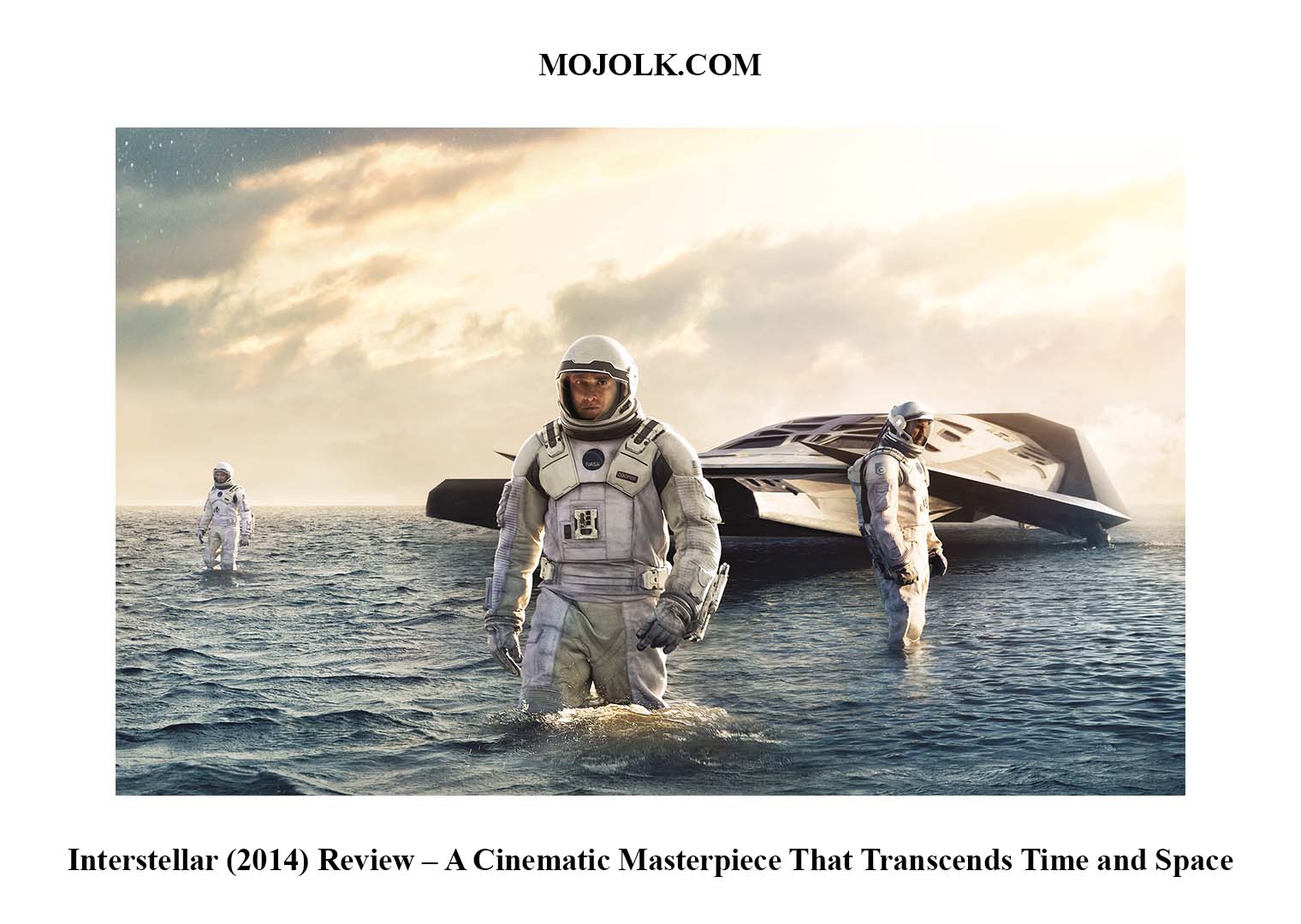Introduction – Why Interstellar (2014) Continues to Captivate Audiences
Christopher Nolan’s Interstellar (2014) continues to fascinate audiences nearly a decade after its release. This film does more than entertain—it challenges the viewer to think about science, love, time, and survival in ways that few sci-fi films have attempted. Nolan delivers a story that is both intellectually stimulating and emotionally resonant. The film stands out in a crowded genre by presenting real theoretical science alongside deeply human emotion, resulting in an unforgettable cinematic experience.
Plot and Narrative Depth in Interstellar (2014)
The plot of Interstellar follows Cooper, a former NASA pilot turned farmer, who discovers a secret mission designed to save humanity. The Earth suffers from environmental degradation, and scientists warn that the planet will soon become uninhabitable. Cooper joins a crew of astronauts who travel through a wormhole in search of a new habitable planet. His mission takes him far from his family, especially his daughter Murph, whose connection with him remains at the heart of the film.
The narrative unfolds across multiple timelines and dimensions, allowing Nolan to explore concepts like time dilation, gravity, and relativity. However, he never loses focus on the human element. As Cooper journeys deeper into space, Murph grows up on Earth, working to solve the equation that could rescue humanity. Their bond drives the story forward, making the film’s scientific exploration feel urgent and personal.
The Vision and Direction Behind Interstellar (2014)
Christopher Nolan approaches Interstellar with a level of ambition rarely seen in modern filmmaking. He treats the audience with respect, assuming they can follow complex scientific theories while becoming emotionally invested in the characters. His collaboration with physicist Kip Thorne grounds the film in real scientific principles, giving weight and authenticity to the speculative elements.
Nolan structures the story in a non-linear fashion, weaving past, present, and future together to mimic the film’s thematic exploration of time. He builds tension through visual cues and emotional beats rather than relying solely on exposition. By doing so, he creates a film that engages both the intellect and the heart, a hallmark of his most successful work.
Performances That Make Interstellar (2014) Unforgettable
Matthew McConaughey leads the cast with a performance that blends rugged determination with emotional vulnerability. As Cooper, he portrays a father torn between duty and love, capturing the inner conflict with honesty and intensity. Anne Hathaway plays Dr. Amelia Brand, a scientist driven by both logic and feeling, and she provides a compelling counterbalance to Cooper’s emotional urgency.
Jessica Chastain shines as the adult version of Murph, delivering moments of frustration, genius, and heartache with authenticity. Her scenes demonstrate the long-term emotional impact of time and distance, and she helps anchor the film in its emotional core. The supporting cast, including Michael Caine as Professor Brand and Matt Damon as Dr. Mann, adds complexity and unpredictability to the story.
Visual Storytelling and Cinematic Brilliance in Interstellar (2014)
Visually, Interstellar stands among the most breathtaking films of the 21st century. Cinematographer Hoyte van Hoytema captures the vastness of space and the intimacy of human emotion with equal precision. The imagery of Saturn’s rings, alien landscapes, and the black hole Gargantua delivers a sense of scale and beauty that few films have matched.
Nolan chooses to film many sequences using IMAX cameras and practical effects, which enhances the realism and immersion. His decision to minimize the use of green screens creates a tangible world that feels grounded despite its cosmic scope. The film’s aesthetic complements its narrative themes, reinforcing the sense of isolation, wonder, and urgency that defines the characters’ journey.
The Power of Music and Emotion in Interstellar (2014)
Hans Zimmer composes one of his most memorable scores for Interstellar, using organs, ticking sounds, and swelling melodies to elevate the emotional intensity of the story. The music does not simply accompany scenes—it amplifies their meaning. The iconic “Cornfield Chase” track reflects both the beauty of Earth and the desperation of departure, while “No Time for Caution” heightens the film’s most suspenseful moments with a rhythmic urgency.
Zimmer’s score mirrors the characters’ internal struggles and triumphs, making the film’s emotional beats more profound. His music bridges the scientific with the spiritual, turning space travel into a deeply human experience.
Themes and Messages in Interstellar (2014)
Interstellar explores a wide range of themes, including love, sacrifice, survival, and the human spirit. Nolan emphasizes that love is not just a human emotion but a force that transcends dimensions. The bond between Cooper and Murph symbolizes hope and persistence in the face of the unknown.
The film also critiques humanity’s tendency to neglect the Earth while placing blind faith in technology. It challenges viewers to consider the ethical implications of exploration and the responsibilities we hold to future generations. Time, in Interstellar, becomes a character itself—fragile, unforgiving, and capable of separating or reconnecting people across galaxies.
The Enduring Impact of Interstellar (2014)
Since its release, Interstellar has become a benchmark for intelligent science fiction. It inspires conversations among scientists, filmmakers, and audiences alike. Its accurate representation of black holes even influenced scientific visualizations. Film lovers admire it for its emotional resonance, while educators use it to spark interest in physics and astronomy.
The film continues to attract new viewers who seek depth and ambition in cinema. It rewards multiple viewings, as its layers of meaning reveal themselves gradually. Its blend of spectacle and soul ensures that Interstellar will remain relevant for generations to come.
Final Thoughts on Interstellar (2014)
Interstellar (2014) stands as a testament to the power of film to explore complex ideas while telling a deeply human story. Christopher Nolan’s direction, combined with stellar performances, visionary visuals, and a moving score, creates an experience that transcends entertainment. The film reminds us that even in the vast emptiness of space, it is love, memory, and connection that define our existence.
For anyone who values cinema that challenges, moves, and inspires, Interstellar is not just a film—it is a journey worth taking.

